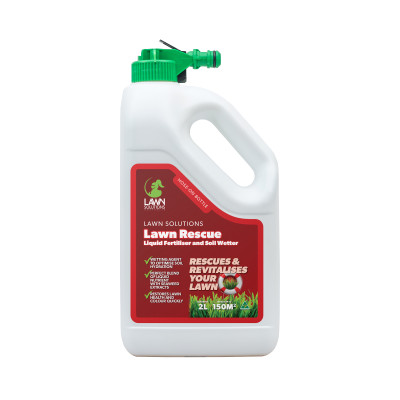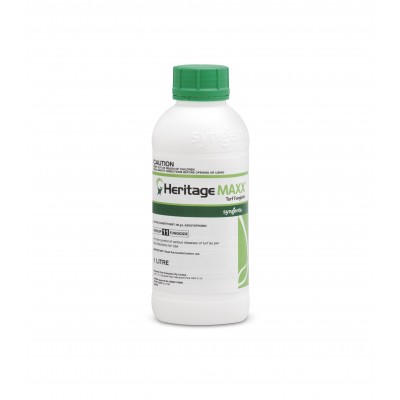AVELEY NORTH PRIMARY SCHOOL
Western Australia has approximately 490 public schools throughout the Perth metro area. Each school has a grounds person to look after each site, many only on a part- time basis of 1-2 days per week, unless it is a large school requiring further full-time equivalent (FTE). Irrigation on all sites is automatic and water is supplied via bores. The maintenance of the turf areas is currently carried out by two contractors. Lawn Doctor is the largest service provider with 270 school sites, including the mowing, fertilising, weed spraying, renovation, and construction of all turf areas. Lawn Doctor has been contracting to the Department of Education in WA for 32 years.
The climate in WA is hot and dry in the warm months with an average rainfall of around 600mm per year with most falling during the winter months as summer rain in the Southwest corner of the continent is uncommon. Perth metro area is 99% sand with little to no water or nutrient holding capacity, making growing good quality turf difficult.
The current maintenance contract limits school sites to just one fertiliser application and two wetting agent applications per year unless they choose to allocate additional funds themselves. This restriction poses a challenge in maintaining a durable surface that can withstand the harsh climate, constant water restrictions, and the sandy soil composition. Moreover, the constant heavy usage of the turf areas by students exacerbates the difficulty of keeping the turf surface in optimal condition. Adding to these challenges, the invasion of Southern Sting Nematodes has further intensified the struggles faced by many turf areas.
Southern Sting Nematode
Southern Sting Nematode (Ibipora lolii) is the most damaging nematode pest of turfgrass in Australia. It was first reported in the Newcastle area of New South Wales in 1979 and is now causing severe damage to sports grounds in Perth.
For years, the Department of Education specified the use of Kikuyu on school grounds, believing it to be the best variety available to cope with the challenging conditions. Unfortunately, the damage caused by the Southern Sting Nematodes to the root system is particularly severe in schools where Kikuyu grass is predominant.
The impact of these nematodes is especially pronounced in sites with larger school populations, rendering the ovals completely unusable. One site was Aveley North Primary School, a reasonably sized primary school located in Perth’s Northeast, where the nematode infestation resulted in their oval being unfit for purpose.
The school has approximately 900 students and is 6 years old. The oval was laid with instant Kikuyu that arrived with a significant Sting Nematode population and the oval has struggled to be a viable playing surface. The Department of Education approached Lawn Doctor for options on how to improve the turf surface, including renovations, pesticide applications, and additional nutritional inputs.
Turf Replacement Selection – TifTuf Hybrid Bermuda
Lawn Doctor was concerned the additional funding spent would not provide the required results and this would negatively impact all stakeholders, including the students, the Department of Education, and Lawn Doctor. Lawn Doctor decided that the best recommendation was a complete reconstruction of the oval using TifTuf Hybrid Couch. A proposal was written and submitted, outlining the benefits, including the active root system, the need for minimal fertiliser inputs, reduced water usage, and its active winter growth. After several meetings and a full risk assessment, a commitment was made by the Department of Education to variate from the specified Kikuyu and go with this hybrid couch variety. An independent consultancy firm, Sports Turf Technology (STT), was bought in to work with Lawn Doctor on the process for installation and to report on what worked and what didn’t to build a basis for any possible future works using TifTuf.
One of the challenges was the watering of the new grass without impacting the water available to the rest of the school during establishment. The groundwater is plentiful, however the ground in this part of Perth is at the base of the Darling Range and is a heavy loam and clay soil. This makes the ground very tight and water extraction extremely slow. The system is comprised of a low-volume submersible within the bore which pumps into a tank of approximately 50,000 litres before a centrifugal pump delivers the water from the tank. The challenge was to ensure the recharge of the tank was sufficient and to ensure water was available for the rest of the school grounds and garden areas. STT tested the flow rates and calculated water output and was confident the infrastructure was going to be sufficient.

Construction Process
Step 1. All sprinklers were lowered to 40mm below the surface utilising 300mm Articulated Risers on I25 Hunter sprinklers. Any other fittings and fixtures such as valve boxes and electrical pits were identified and marked out.
Step 2. The Field Top Maker (FTM) was bought in and set to 30mm, and the entire surface of sparse Kikuyu was removed, which took 2 days. There were challenges with the sand being loose as the two chaser trucks catching the trash material were constantly getting bogged. Areas that the FTM couldn’t reach were removed with an “Ings” pedestrian turf cutter, bobcat, or by hand. Once the surface was removed and waste stockpiled (we got around 300m3 waste) the waste was carted out by semi- trailers to an approved waste facility.
Step 3. The surface was turned over with the use of a Blecovator to a depth of 220mm with sieves set at 15mm to bury any overburden or excess trash and leave a clean sand base to work with. There were three passes made in differing directions. This process revealed that stone and old asphalt rubble ranged from 5mm to 350mm below the surface in the top 220mm.
Step 4. Not being aware of the rubble previously, we needed to seek action for additional works and we subcontracted to another turf contractor to sieve the profile with a beach cleaner. This delayed the project by two days, however, the machine worked well, removing stones and debris from as small as 10mm to a depth of 300mm. In total, 45 tonnes of stone and asphalt were removed. The surface needed to remain dry for this part of the operation to allow the sand to fall through the sieves easily.
Step 5. All irrigation was tested, repairs made where required and we began the re-wetting process to get moisture down to 200mm.

Step 6. Part of the initial recommendations we made was to incorporate some organic material into the profile. This was to build organics and increase the cation exchange for nutrient holding because Sting Nematodes do not like compost. 150m3 was spread by a Marshall twin spinner evenly over the surface and was then incorporated into the top 50mm of the surface with the Blecovator.
Step 7. Levelling with a smudge board began and rolling to consolidate the surface to just leave a footprint in the soil. A Posi-track bobcat and some hard work finished off around the centre wicket, goal posts, and a few pits and valve boxes, and the ground was now ready for installation. This was completed on a Friday afternoon. Lawn Doctor set up an irrigation cycle to manage establishment watering of the freshly laid turf over the weekend to see if the equipment was up to the task. The system was set to run at 5 am, 10 am, and 3 pm to apply 4mm at each cycle, bearing in mind it was 37- 44 degrees in February with strong hot easterly winds at the base of the escarpment where the school was situated. On Saturday morning, low-level shutoffs were found in the system and the tank was nearly dry as there was no recharge into the tank. We found a gate valve that was shut and opened it and heard water going into the tank but then realised this was scheme water, not from the bore. We had no access to the bore resets, so we let the scheme run. We shut the irrigation control system down until that evening and then set it to run again on Sunday. On Monday, we managed to get Western Irrigation in as they manage the irrigation for this site and the issue was an iron filter. Once this was rectified the bore kicked in and recharge began. We were set to start laying that week; however, Lawn Doctor did not make the final decision to install until we were convinced the water was available.
Step 8. Watering was reliable and we started bringing in the turf; we transported 3,000m2 in on the first day, 4,000m2 on day 2, and the balance of 2,700m2 on the last day. The installers from Allwest Turf had a job cancel so they had up to 15 guys laying the TifTuf in 42-degree heat directly onto the sand.
Step 9. Turf installs were completed and rolling with a twin drum roller removed any depressions. Water was set to run 3 times per day for two weeks at 30 mins per station (8 stations in total) then after 2 weeks the run times were reduced to 20mins 3 times per day. Mowing began at 20mm using a Toro fairway mower, this was completed twice per week on a Monday and Thursday. Week 5 water was reduced to twice a day for 15 minutes (still 35-degree days) and the TifTuf never looked as though it was stressed by lack of water. In week 6, we further reduced the water to 1 water per day, the grass kept growing, and mowing continued twice per week. At this point, we raised the height of the cut to 25mm which is the Department of Education’s specified height and continued mowing twice weekly.
Step 10. A fertiliser application of NPK plus Trace elements was applied at 200kg per hectare.
Water was reduced at this point to 3 times per week as per watering guidelines in WA.
After 4 weeks the oval was ready for the students and school community, however, the school Principal decided to keep it out of use until the beginning of the new term after the Easter break. The TifTuf oval is now in full use and going great, the school is very happy, and the kids are enjoying their new oval and sports activities.
Our goal is for TifTuf to be recognised as an excellent option for sports turf fields in Western Australia. We hope to use this opportunity to work with STT on building a strong case study showing how TifTuf turf can outcompete the damage caused by Sting Nematodes. This, along with its other benefits including reduced water usage and nutritional inputs, strong wear and tear, and fast establishment time, will help us to educate Local Governments and sporting facilities about the overall benefits and reliability of this grass variety, not only for the users but also for the environment.


